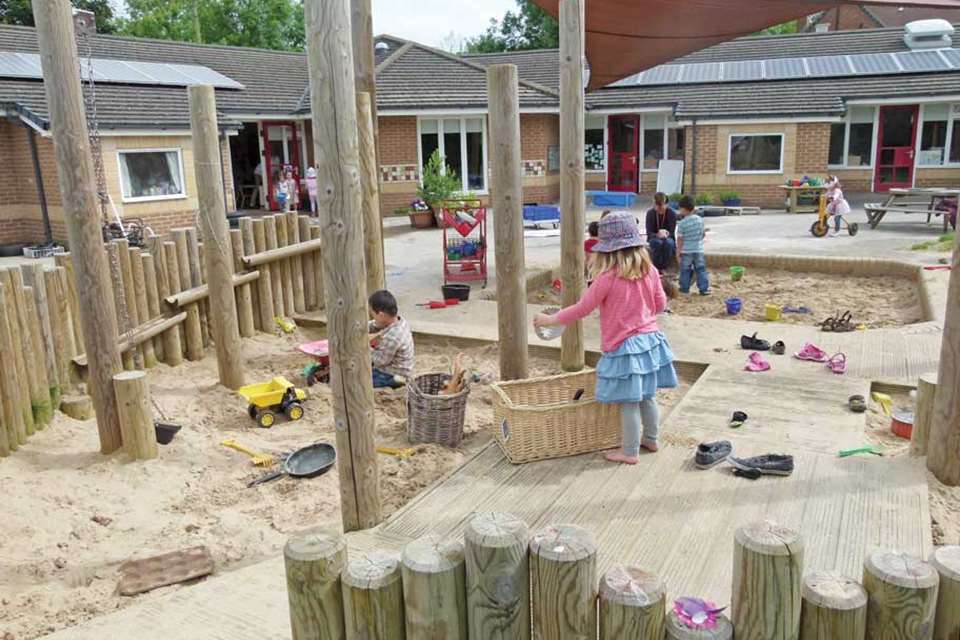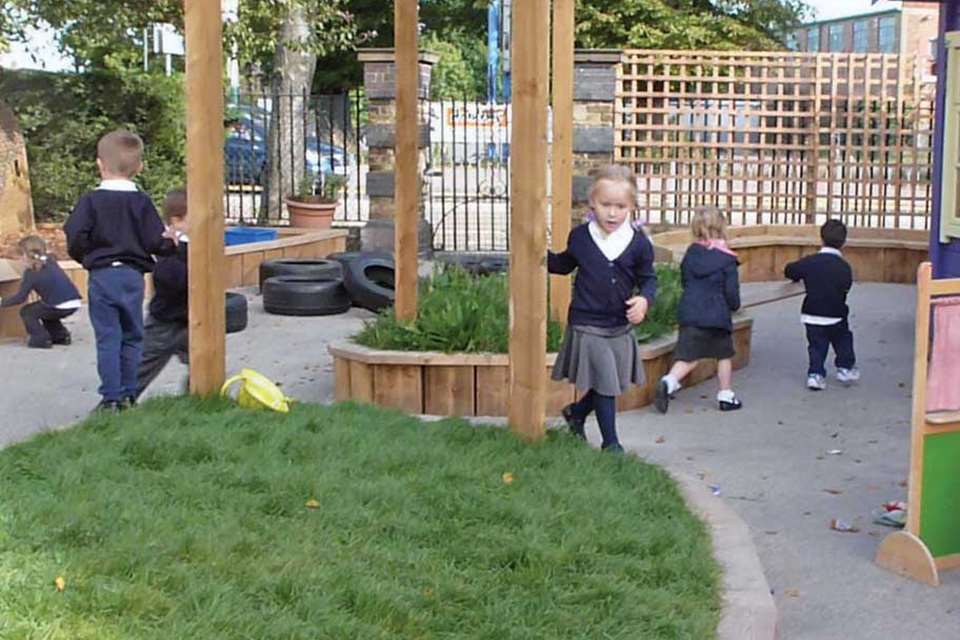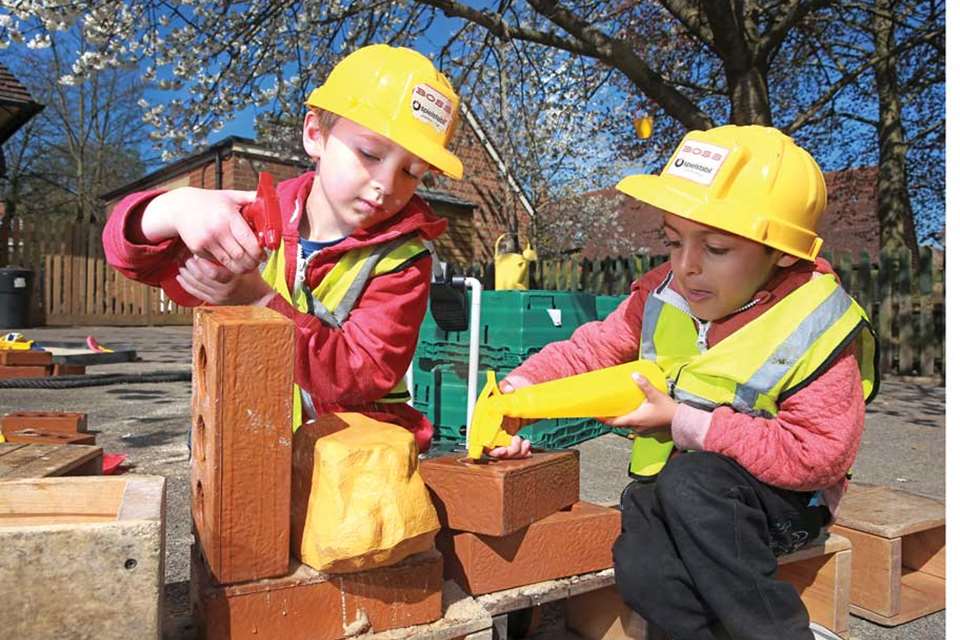Enabling Environments: Outdoors - Clear thinking
Julie Mountain
Monday, June 2, 2014
In part three of her series on the 7Cs approach to planning outdoor spaces for young children, Julie Mountain explains the importance of incorporating 'clarity' and 'challenge'.
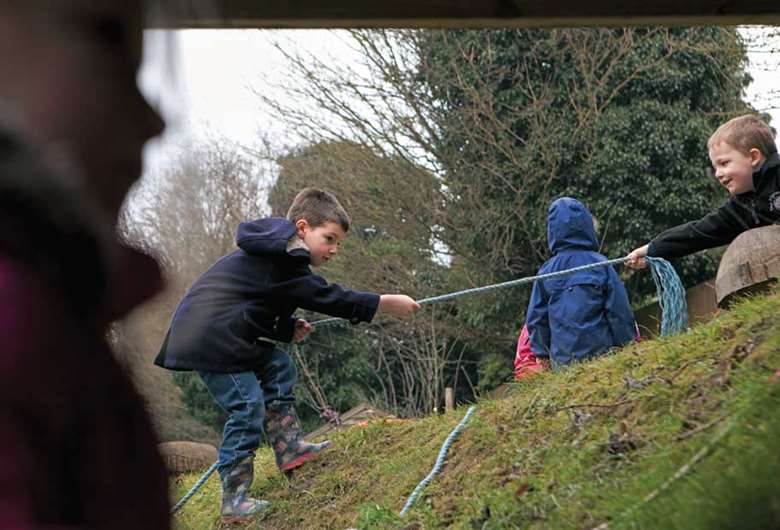
Fascinating action research by academics at the University of British Columbia suggests that the design qualities applied to early childhood outdoor spaces have a significant effect on children's use and enjoyment of these spaces. So far, we've looked at three of the seven Cs that make up the research team's 7Cs approach to planning outdoor spaces: 'character' (Nursery World, 7 April), 'context' and 'connectivity' (Nursery World, 5 May). This month we explore 'clarity' and 'challenge'.
CLARITY - WHAT DOES IT MEAN?
The 7Cs guidance defines 'clarity' in two ways: visually and physically, with the two being fundamentally connected.
In a physically legible space, children are able to move around in logical ways (by which we, of course, mean logical to children - they will consider 'along the edge of the planter' or 'in between the fence and the hedge' perfectly logical). The flow of children's play is uninterrupted by equipment or features and their activity choices are informed in positive ways by the nature of the space available. A physically legible early childhood play space is designed with flow, visual perception and equality of occupation in mind.
Several of the 7Cs reference the disproportionate effect of large items of fixed play equipment (and their inevitable encroaching, rubberised fall zones) on the remainder of the space.
Despite relatively low 'play value', fixed play equipment frequently dominates the geographical centre of an early childhood space, relegating all other activity to accidental sub-spaces. Physically active play in particular suffers when spaces and sub-spaces are not demarcated within an overall plan - so games of tag, bikes and trikes and imaginative play scenarios are hindered when routes around a space and opportunities for movement are unclear.
During the 7Cs research, practitioners noted that where there was a want of clear entrances and exits to the outdoors, or where bottlenecks occurred due to inappropriately scaled exits and entrances, accidents were more frequent and children's behaviour poorer.
The lack of attention paid to routes into and through the space led to awkward sub-spaces, which were hard to supervise, use and clear up at the end of a session.
The 'soundscape' of an early childhood space is an additional element affecting its legibility. During the 7Cs research project, the team noted that ambient noise levels also influenced the quality of children's experiences outdoors.
Where play spaces were adjacent to traffic noise and comprised of mainly hard landscaping with few 'softening' plants or trees, the outcome was 'a general atmosphere of confusion (and) stress in both early childhood educators and children'.
The researchers concluded that early childhood play areas should provide defined and purposeful spaces that connect visually and aesthetically and allow children to move freely throughout (see the clarity comparison diagram, overleaf).
It doesn't mean that the space should be bland or featureless, or that movement should not be challenging. Rather, it's about beginning by thinking about how children will move around a space and linking features using scale, distinctive aesthetic traits and natural materials. Collectively, these will provide persuasive and coherent landscapes for play.
CLARITY IN PRACTICE
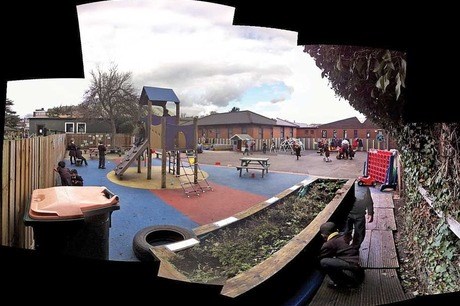
SS Peter and Paul's Catholic Primary School in south London is undergoing a Foundation Stage playground transformation. Practitioners have worked with Play Learning Life to record the rhythms and pace of the play space and to establish how children like to play - asking what the children want to do outdoors, rather than what they want to have.
While the large and traditional piece of play equipment divides opinion among staff, it is popular with children and is actually located in a practical place - on the periphery of the playground. This means that the large open area in the middle of the playground is free to be used flexibly to meet children's changing interests.
This idea of a central 'core' space with exciting features on the margins will be maintained even after the new interventions, meaning that the equipment will be integrated into the landscape and will connect with other elements.
Interestingly, the playground audit at SS Peter and Paul's reflected the 7Cs premise that fixed play equipment is rarely used in the way it was intended. A few children were climbing the net and ladder and heading down the slide the 'right' way, but far more were using it as a 'tag' base, hiding under it, climbing the 'wrong' way up the slide and riding around it on trikes.
CHALLENGE - WHAT DOES IT MEAN?
Following the publication of Outside Criteria's 7Cs guidance, one of Professor Susan Herrington's PhD students at the University of British Columbia carried out further study at one of the original 16 research settings. The student, Jamie Nicholls, noted that, 'The image of the child in society too often is one of (being) impressionable, vulnerable and weak. Our design culture responds in kind, removing all risks and asking children not to test their abilities.'
In the UK, the importance of risk-taking in childhood is regaining a foothold in our understanding of children's key developmental milestones, and there is no shortage of information, advice and guidance to enable even the most risk-averse practitioner to change their practice.
Even the Health and Safety Executive has issued guidance on the importance of providing risky play, stating that, 'Play is great for children's wellbeing and development. When planning and providing play opportunities, the goal is not to eliminate risk, but to weigh up the risks and benefits. No child will learn about risk if they are wrapped in cotton wool.'
- For babies and toddlers, graduated challenge is key to enabling them to access high-quality outdoor play. The 7Cs researchers noted that 'simple design elements served as catalysts for challenge'. In practice, this means that design elements such as the edges of raised beds, varying wall heights, tunnels and bridges should be seen as part of a portfolio of physical challenge opportunities.
- This recognition of the multiple uses of almost any object is an approach to design known as Affordance Theory and was developed by American psychologist JJ Gibson. The concept has been widely adopted (and adapted) by the play sector and is fundamental to the theory of loose parts in play.
- The 7Cs researchers noted that physical challenge could be provided by modest interventions such as the installation of ramps to encourage babies to crawl and explore independently, or driftwood in a sandpit, which toddlers could manipulate to afford the desired height and angle for clambering. They described this as enabling 'each child to find an optimal level of challenge'.
Fixed play equipment is a part of most early childhood settings, but its presence is not without controversy. While there is little debate about the equipment's ability to deliver the basics of physical challenge, the question of its wider 'play value' is still up for debate.
Simpler (and cheaper) and less intimidatingly dominant structures can provide much of the same physical challenge, while affording a whole range of other open-ended play opportunities. With outdoor play budgets still under pressure, settings really need to ask whether an investment in a fixed item of climbing equipment (plus safer surfacing) will meet the needs of their children.
Increasingly in the UK, 'challenge' is recognised to mean not just the physical encounters that we offer children, but also the emotional and intellectual risks we encourage them to take. Agility, dexterity, strength - these undoubtedly essential skills represent just a fragment of the opportunities offered by outdoor play, which is an excellent vehicle for developing confidence, self-esteem and communication skills.
THE IMPLICATIONS FOR YOUR SETTING
Landscape designer Jane Wratten of Yard Explorers (www.yardexplorers.co.uk) suggests that settings ought not to be scared of 'empty space' and instead should think about how a garden can be adapted and influenced by children using portable and loose-parts resources.
'Sometimes I visit a setting,' she says, 'and can't immediately tell why it just doesn't feel right. Then I realise it's because the space is so cluttered - there's not a clear line of sight or thematic idea or design theme anywhere. Gardens like this are not restful places to be, and clutter can block creative play.'
In this context, clarity is not about designing to enable adults to see children at all times - this simply subverts the potential for adventure. Hidey holes, winding pathways, level changes, challenging surfaces, tree houses and secret corners can all be elements within a physically and visually legible space. The trick is to connect these elements in a purposeful way so that children can move between them and be in control of their play, rather than their play being controlled by the features.
Think about the 'challenges' that children are offered outdoors at your setting: what affordances can you identify? Auditing opportunities for challenge is a valuable exercise and may well help you shape the way you deliver not just the physical development element of the early years curriculum, but also the elements that relate to children's social, emotional and intellectual development too. All of it, in fact.
However, to make the most of the affordances you identify, you will also need to adopt a 'risk benefit' approach to risk assessment. This relatively new method emphasises the benefits children will gain from participating in an activity and then considers the hazards and how they can be mitigated. This route makes it possible to enable risk and challenge outdoors.
Here's an example of how it works:
Activity: Clambering over boulders in the sandpit.
Benefits: Connection with natural materials; opportunities for manipulative and problem-solving play; collaboration; confidence building; stretching, leaping and balancing; feeling the temperature differentials and textures of rock ...
Hazards: Injuries from slips, trips and grazes.
Likelihood and severity: Minor injuries (for example, grazes) can be expected; severe injuries (for example, broken bones) are unlikely; life-changing injury (for example, loss of limb or sense) is very unlikely.
Mitigation: Locate boulders in the centre of the sandpit to provide impact-absorbing surface; help children manage their balance and co-ordination until they are confident and capable of doing so independently; choose boulders that are either too large to move single-handedly or are small enough not to crush fingers and feet when moved.
Decision: The benefits of having boulders in the sandpit outweigh the risks presented.
An interesting twist on this is to think about the risks children face if they don't do a risky activity. If children never get to clamber over boulders in the (risk-assessed, fully supervised, carefully managed) early childhood play space, they will be less skilled and experienced at managing their balance and co-ordination when they encounter the awkward or unusual surfaces found underfoot in the wider world. It is reasonable to assume, therefore, that they will be more likely to experience injuries than if they were regularly able to practise the necessary skills at your setting.
WHAT NEXT FOR YOUR SETTING?
- Download the 7Cs guide: www.wstcoast.org/playspaces/outsidecriteria/7Cs.pdf
- Each article in this series is accompanied by a guidance note, aimed at helping settings apply the 7Cs principles to their own circumstances. See belwow to download the corresponding guidance. The guidance for this article focuses on helping you consider clarity in your outdoor space using mapping and annotating techniques.
- Regulatory body the Health and Safety Executive (HSE) is keen to redress the myth that health and safety legislation prevents exciting and risky play. Read the HSE's High Level Statement on risky play, 'Children's Play and Leisure: Promoting a Balanced Approach'. It is a free, two-sided PDF available to download from www.hse.gov.uk; it should form part of your setting's health and safety folder but, more importantly, it should influence your everyday risk management practice.
Julie Mountain is an early childhood landscape designer and director of Play Learning Life CIC Play.
MORE INFORMATION
So far, our 7Cs series has provided an overview of the approach and looked at three elements: 'character' (Nursery World, 7 April), 'context' and 'connectivity' (Nursery World, 5 May). See related articles, below.



